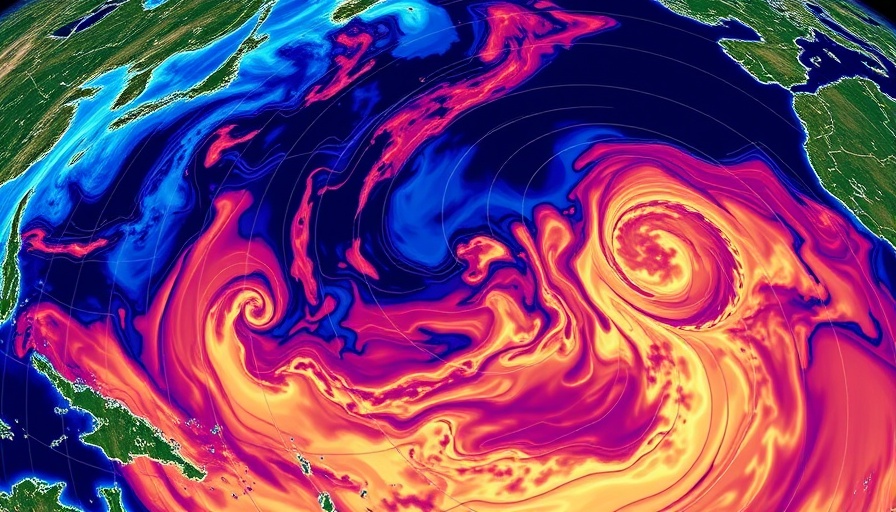
Unraveling the Power of Coastal Winds: A Unique Meteorological Event
In mid-June, San Francisco and the Bay Area were treated to a rare meteorological spectacle that showcased the might of the California Coastal Low-Level Jet (CLLJ). While locals are accustomed to the infamous "June Gloom"—foggy marine layers that blanket the region at this time of year—the recent high-wind event deviated significantly from the norm. Winds gusting over 50 knots jolted the city, bringing not just an exhilarating change of pace, but also potent reminders of the complexities of local weather.
Understanding the Mechanics: How Pressure Drives Wind
This remarkable event found its roots in a massive dome of high pressure originating from the North Pacific. The North Pacific High (NPH) established an atmospheric barrier, forcing the winds to gain intensity as they rushed towards an area of low pressure primarily situated over the Central Valley. This stark contrast between high and low pressure created a steep pressure gradient, acting like a ramp for the winds—accelerating them as they coursed down to the Bay Area.
The Vulnerability of Coastal Weather: Historical Context
Historically, the Bay Area is not easy to surprise when it comes to weather, but this event reminded residents of the potential for unpredictability. Typically, June brings a stable marine layer, cooling coastal air and creating a gentle weather pattern. In contrast, the recent pattern saw extreme heating in areas like the Great Basin, which expanded the low-pressure area dramatically—in short, nature unveiled a formidable corner of its palette.
The Role of Geography: How Terrain Influenced Wind Pathways
The jagged Coast Range played an integral role in shaping how these intense winds moved through the region. As the winds funneled through gaps like the Golden Gate and San Bruno Gap, they gained momentum and veered toward the East Bay. This phenomenon not only transformed the typical landscape but also highlighted how diverse geography can influence meteorological events. One might consider how landmarks function as both protectors and guides for the wind—as they do for the people below!
Implications for the Future: Preparing for Climate Change's Effects
The increased intensity of weather patterns certainly raises questions about the future. How might climate change continue to alter these long-standing patterns? This recent wind event serves as a powerful reminder that as climate conditions shift, so will local dynamics, and awareness of these changes is critical for residents. Understanding these fluctuations—like winds that are both a joy and a reminder of nature's power—can help communities better prepare for future weather events.
As we welcome the changing seasons, it's critical for local communities, especially those in high desert regions, to engage with these climate challenges. The extreme winds—similar to those we've seen recently—could become more common, and understanding their patterns can empower residents to adapt and respond confidently.
A Call for Local Engagement: What You Can Do
Residents of the high desert are encouraged to stay informed and engaged with local climate stories. Join community initiatives aimed at climate awareness, attend discussions, and be a part of the conversation on adaptability and resilience in your lifestyle. Whether it's through organizing community clean-ups or simply sharing insights with your neighbors, every small effort counts!
 Add Row
Add Row  Add
Add 




Write A Comment